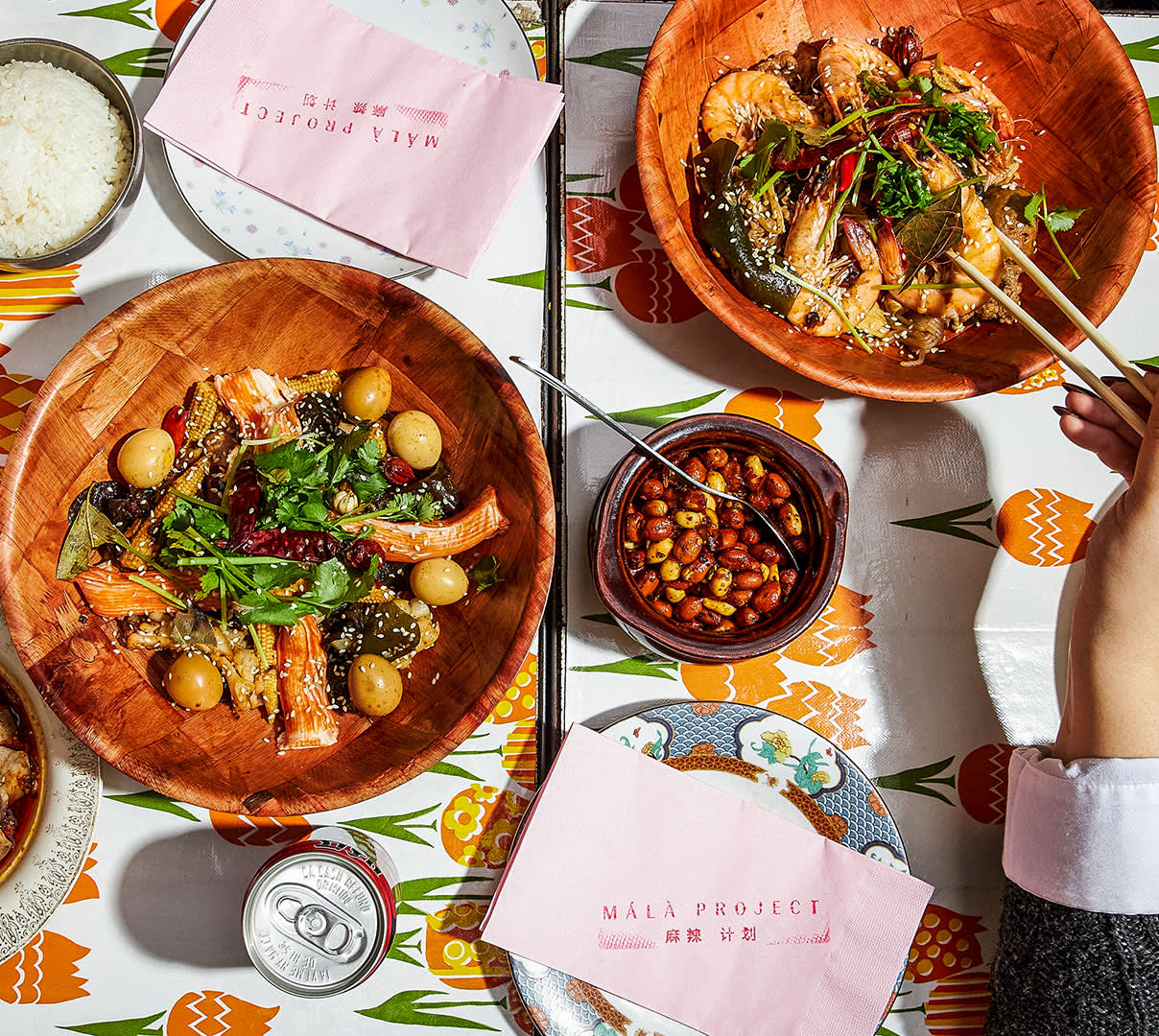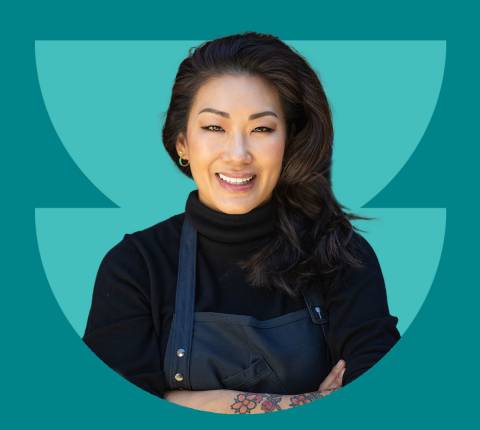Though Amelie Kang has achieved considerable culinary feats in the past decade — graduating from the CIA, learning the ropes at New York City’s first Michelin-starred Chinese restaurant, and opening the first outpost of the hit restaurant MáLà Project when she was just 23 — when she goes back to her family home in China, it’s still her grandmother who runs the kitchen.
“I don’t really cook when I’m back home. My grandmother is 86 years old, and she sits at this little stool in the kitchen and in 30 minutes has made this elaborate meal,” explains Kang, who was born in Tangshan, Hebei, and raised in Beijing.
The dishes served at MáLà Project aren’t something you would find on her grandmother’s table. In fact, the house style of dry pot is actually a relatively new phenomenon, one Kang wisely guessed would be a hit with an NYC audience. Though diners choose their own ingredients, just as they would for classic hot pot, for dry pot, chefs stir-fry those ingredient combinations in a potent spice blend (more on that in a minute) instead of having guests simmer them tableside.
“We had to explain dry pot to people when we opened, not only to Western customers, but also to Chinese customers who hadn’t had it before,” says Kang. “I only started eating it in high school, when it became a thing in cities like Beijing. It’s a new format that took off there because it’s something you can have alone, on the go, or share with family and friends — it’s really flexible.”

Sourcing the best produce and proteins was a no-brainer for Kang when she was developing the menu with one of her business partners, Meng Ai, and opening chef Zilong Zhao. But nailing their signature spice blend was a more iterative process. As Kang recalls, “We spent two or three months recipe testing just the spice mix. In dry pot, there are a number of seasoning elements layered — chile oil, hot sauce, and chile paste. Our mix of spices is different from what you would find in China, but when we landed on it, we all knew that was the one.”
When the first MáLà Project opened its doors in the East Village in 2015, the bold, spicy flavors and cozy, industrial-chic space quickly became a hit, landing Kang and her co-founders on the Forbes 30 Under 30 list, nabbing her an Eater Young Guns Award, and garnering the attention of the likes of “The New Yorker” and Michelin. Two more locations, in Bryant Park and Midtown, followed suit, and a fourth location is set to open in Greenpoint in January.
Though the menu at each location varies slightly, at its core are hyper-fresh ingredients, from classic (baby corn, sweet potato, and taro) to traditional (frog’s legs, mushrooms, and tripe), with some luxe ingredients in there for good measure (tender crab and top cuts of beef). Each dry pot comes with the guest’s preferred level of spice, from garlicky and mild to lip-tingling, table-gripping hot. Made from close to two dozen ingredients, like gardenia fruit, clove, Sichuan peppercorns, and star anise, their signature dry pot seasoning is equal parts bright and incendiary, a sophisticated blending of powerful notes into one harmonious symphony. Paired with a starter like the juicy, crowd-favorite fried chicken, you’ve got a memorable feast, whether it’s Tuesday night in front of the TV, a candlelit anniversary dinner, or an overflowing birthday bash. In fact, customers come up to Kang to tell her that they had a first date or even got engaged while eating at MáLà.

A year after getting a handle on the in-person crowds, Kang and her partners also figured out how to bring their singular version of Chinese cooking to diners via home delivery, a process that involved developing suggested ingredient combos, painstaking trial and error to figure out how to preserve the crispness of the scallion pancake (the answer is cutting vents in the container) and keeping cilantro garnish looking perky — something that Kang admits still keeps her up at night trying to perfect.
All that legwork proved fortuitous when the pandemic hit in 2020. As Kang remembers, “We shut down dine-in like everyone else, but we already had such a strong takeout and delivery business, it was easier for us than for restaurants who had to build that from scratch. We also came up with fun things like selling jars of our pantry sauce, and the community was really supportive. We would post on Instagram when a batch was ready and people would always show up.” The innovation-by-necessity days of COVID-19 also led to new collaborations, like a Spicy Mala Sauce available from Omsom.
That supportive feeling extends beyond MáLà’s customers to fellow restaurants. “There’s a very strong restaurant community here, not only limited to the Chinese and Asian community. First you have the Chinese community, that’s the smallest circle, then you have the larger AAPI community around it, and it gets bigger from there. Regardless of race or gender, you look around and realize there are a lot of cool industry peers supporting each other.”

After a few years of uncertainty and upheaval, Kang feels like there’s a certain level of stability returning: MáLà Project’s two midtown locations are nearing pre-pandemic capacity, their delivery business is a well-oiled machine, and expanding to a whole new borough feels not only feasible, but exciting. “We’ve accepted that whatever we’re experiencing now is the new normal,” Kang says. She and her team are looking forward to opening their new location in Greenpoint, their much-anticipated first foray into Brooklyn, designed in collaboration with interior firm Love Is Enough.
Throughout on-the-fly changes and new expansions, it’s imperative to Kang that the DNA of MáLà remains the same. “We want to have good people who have a lot of fun together. And that’s how we treat everybody, from our staff to our customers to our delivery partners. It’s important that we get along with everyone we come in contact with, that there’s a synergy there.” That personal touch can be seen and tasted in every dish — maybe that’s why her signature dry pot combos have become a go-to dinner-date meal for New Yorkers who like it (very) spicy.
Photo credits: Michelle Giang/Second to None





